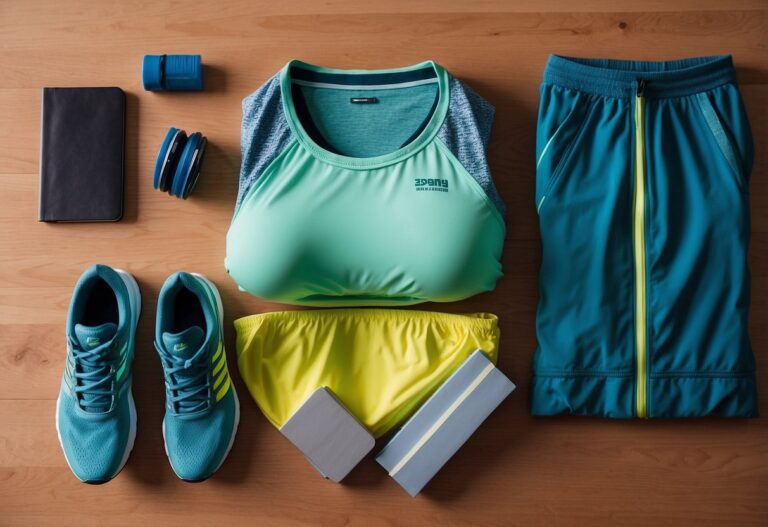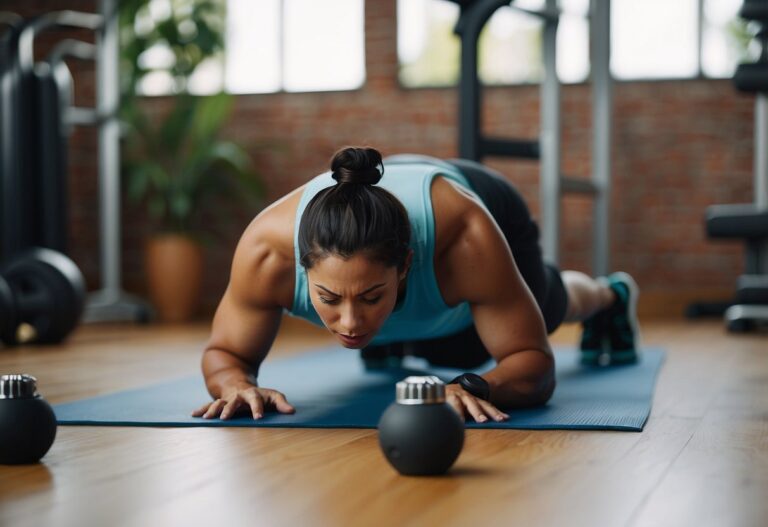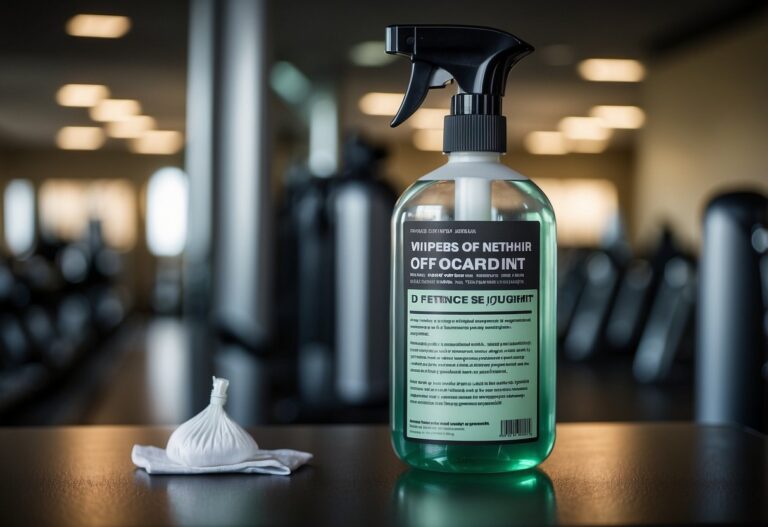Taking a walk is a great way to stay active, but did you know you can easily turn it into a more effective workout? By incorporating some simple techniques and changes, you can boost the intensity and benefits of your daily walks.

You don’t need to commit to a gym or buy any special equipment. Just a few tweaks can transform your regular stroll into a full-body workout. Whether you’re looking to burn more calories, tone your muscles, or just get your heart pumping, there are plenty of ways to enhance your walking routine.
Pace Yourself
When turning your walk into a workout, pacing yourself is essential.
Start by walking at a steady pace. This helps prevent fatigue and keeps your energy levels up.
If you want to push yourself, try intervals. Walk briskly for two minutes, then slow down for one minute.
Listening to your body is key. If you feel tired, it’s okay to slow down.
Tracking your speed can also be helpful. Use a fitness app or smartwatch to monitor your pace, ensuring you stay within a comfortable range.
Incorporate Intervals

Adding intervals to your walk can make your workout both effective and fun. Start by warming up with a brisk walk for 5-10 minutes. This gets your muscles ready and increases your heart rate gradually.
Next, work on alternating between periods of intense effort and slower-paced walking. For example, walk as fast as you can to a lamp post, then slow down until the next one. This kind of interval pattern can make a huge difference in calorie burning.
You don’t need to sprint; simply walking faster during the intense intervals is enough. Aim for short bursts of 30-60 seconds, followed by 1-2 minutes of easy walking. This helps in building endurance and boosting metabolism.
Remember to listen to your body and adjust the length and intensity of the intervals based on your fitness level. This method keeps the workout interesting and challenging without overexerting yourself.
To get more tips on interval walking, visit Women’s Fitness.
Use Your Arms
Using your arms can make your walk a full-body workout. As you walk, put your arms to work to engage more muscles.
You can pump your arms by making fists and swinging them with each step. This boosts your heart rate and helps build upper body strength.
Holding light hand weights also adds intensity. Just ensure your elbows are bent, and your movements are controlled.
Proper arm positioning is key. Keep a steady rhythm by moving one arm forward while the other goes back. This movement builds muscle as you walk and prevents stiffness.
Think about your form and how your arms move. Keep experimenting with different movements to find what works best for you.
Choose Hilly Routes

Choosing hilly routes can make your walk a lot more effective. Walking uphill demands more effort, increasing your heart rate and burning more calories. It also helps strengthen your legs and improve endurance.
If there are no natural hills nearby, look for routes with inclines or even stairs. These alternatives can provide similar benefits. Another option is to use a treadmill with an incline setting.
For more variety, mix up your routine with different hills and paths. This can keep your workouts interesting and challenging, helping you stay motivated.
Step Count Challenges

Joining a step count challenge can be a fun and effective way to increase your daily activity. These challenges often involve setting a daily step goal and tracking your progress over a set period.
You can participate in step count challenges through apps or community groups. They can help keep you motivated and accountable by providing a supportive environment.
In these challenges, the aim is not only to hit a certain number of steps but also to improve your fitness. Many people find that they push themselves harder when they have a clear goal and others cheering them on.
Step count challenges also often include additional benefits like better heart health and stronger bones. These can be great incentives to keep moving and stay active.
Consider organising a step count challenge with friends or colleagues to make it even more enjoyable. You might find that a bit of friendly competition helps you reach new levels of fitness.
Walking Lunges
Walking lunges are a simple way to boost your workout during a walk. They target your quadriceps, glutes, hamstrings, calves, and core.
To do a walking lunge, take a step forward with one leg while keeping your arms relaxed at your sides. Bend both knees, lowering your back knee towards the ground.
Adding walking lunges to your walk helps improve your balance and core strength. If you haven’t tried them before, start with just a few lunges to see how your body responds.
Walking lunges can be done anywhere, making them perfect for an outdoor walk or even in your living room.
For more details on technique, you can check out Verywell Fit for an in-depth guide.
Listen to Upbeat Music

Having the right music can make a big difference when turning a walk into a workout. Upbeat songs with a fast tempo can help you maintain a brisk pace, keeping your heart rate up and making the walk more enjoyable.
Pick songs that are around 120-140 BPM. Music like “Pink + White” by Frank Ocean is great for this. Upbeat songs engage you more and can actually make you walk faster without realising it.
Creating a playlist of your favourite high-energy tracks can be motivating. Songs that make you want to dance are also perfect for keeping the energy levels high throughout your walk.
If you need ideas, check out playlists online. For example, self.com has some great suggestions.
Stay Hydrated
Staying hydrated is key when turning your walk into a workout. To stay on top of your hydration, aim for about 4-6 ounces of water every 15 minutes. This can help you avoid feeling sluggish.
If you plan to walk for over 90 minutes, it might be wise to carry extra water. Think about using a reusable bottle or a hydration pack for convenience.
Watch for signs of dehydration like feeling thirsty or having dark-coloured urine. Stay ahead by sipping water regularly.
Wear Proper Footwear

Wearing the right shoes is crucial when turning your walk into a workout. A good pair of walking shoes will provide comfort and support. Look for shoes that fit well and have enough cushioning to avoid discomfort.
Make sure there’s some wiggle room in the toe box. This space helps prevent blisters and other foot problems. You should be able to fit about a half-inch or a finger’s width between your longest toe and the front of the shoe.
Check the shoe’s flexibility. Grab the toe and heel and bend them towards each other. The shoe should bend easily at the ball of your foot. This feature allows natural foot movement.
Investing in the right shoes can make your walks more enjoyable and effective. Your feet will thank you for it! For more tips on shoes, check out this guide on choosing proper footwear.
Power Walking
Power walking is a great way to turn a simple walk into a workout.
When power walking, aim for a pace between 4 and 5.5 mph. This is fast enough to get your heart rate up, yet manageable for most people. Focus on maintaining good posture by keeping your shoulders back and your chest high.
Arm movement is key. Swing your arms vigorously to help propel you forward and burn more calories. This engages your upper body, making it a full-body workout.
Try interval training to maximise benefits. Alternate between fast power walking and a more relaxed pace. This can improve your cardiovascular health and increase your calorie burn.
Set realistic goals. Decide how long you want to power walk each time and stick to it. It can be as simple as adding a few extra minutes each day.
Always choose comfortable shoes with good support to avoid injury. Well-cushioned trainers are ideal. Drink water before, during, and after your walk to stay hydrated.
Incorporate these tips and you’ll notice improvements in your fitness and overall wellbeing. For more detailed techniques, you can refer to RunToTheFinish and Walk The Walk.
The Benefits of Walking Workouts
Transforming your walk into a dedicated workout can have numerous advantages. These benefits range from boosting your mood to improving your physical fitness.
Mental Health Advantages
Walking workouts can significantly improve your mental well-being. Engaging in regular walking activities can help reduce stress levels, offering a natural way to unwind and clear your mind. Whether it’s a brisk walk through your local park or a casual stroll in your neighbourhood, walking allows you to regroup mentally.
Being outdoors and in nature can also elevate your mood. Exposure to natural light increases the production of endorphins and serotonin, which are chemicals in the brain that elevate mood and reduce anxiety. Regular walking can help you feel more positive and energised.
Additionally, socialising during walks can enhance your sense of community and decrease feelings of loneliness. Walking with friends or joining a walking group creates opportunities for meaningful interactions and a sense of belonging.
Physical Health Benefits
Walking workouts offer numerous physical health benefits. This low-impact exercise can improve cardiovascular health by increasing blood flow and strengthening the heart. It’s a great way to get your heart rate up without putting excessive strain on your joints.
Another significant benefit is the potential for weight management. Walking regularly, especially at a brisk pace, can help burn calories and promote weight loss. It’s an effective way to kick-start a fitness routine if you’re new to exercise or returning after a break.
Consistent walking can also enhance muscle strength and endurance. Incorporating elements like toe taps on a curb or squats on a park bench into your walk can further engage muscles and increase workout intensity.
Bone health benefits from walking, too. The consistent motion helps to maintain bone density, reducing the risk of osteoporosis. Walking can be adapted for different fitness levels, making it an inclusive exercise option for many.
Effective Techniques to Intensify Your Walk
To make your walk more challenging and effective, there are key techniques you can incorporate. These include adding intervals, using hills and stairs, and carrying weights. Each of these methods can help boost your workout’s intensity and burn more calories.
Incorporating Intervals
Intervals involve mixing short bursts of speed with your regular walking pace. This can help you burn more calories and improve cardiovascular fitness.
A simple way to start is by walking at a normal pace for two minutes, then speeding up for one minute. Repeat this cycle for the duration of your walk.
You could also try timed intervals like walking faster between two lamp posts then slowing down for the next two. This keeps your workout dynamic and engaging.
Utilising Hills and Stairs
Walking on flat ground is great, but hills and stairs can take your workout to the next level. They challenge different muscle groups and increase calorie burn.
Find a local hill or use the stairs in a park or building. When you walk uphill, lean slightly forward and use your arms to help propel you. Walking downwards should be done with care to avoid strain on the knees.
Alternating between flat ground and inclines can make your walk more interesting and effective.
Adding Weights
Using weights can increase the intensity of your walk by adding resistance, which helps build muscle. You can use hand weights, wrist weights, or even a weighted vest.
Start with light weights, such as 1-2 pounds, and increase gradually as you get stronger. Hold hand weights with a firm grip and keep your arms bent at a 90-degree angle as you walk.
Remember to maintain good posture to avoid strain, and be mindful not to overdo it to prevent injury.
Essential Gear for an Enhanced Walking Experience

To make your walk more effective and enjoyable, you need the right gear. Proper footwear and suitable clothing can make all the difference.
Choosing the Right Footwear
Footwear is the most critical part of your walking gear. Good walking shoes should provide excellent support and cushioning. Shoes with good arch support help prevent foot pain and injuries. Look for shoes with breathable materials to keep your feet dry and comfortable. It’s important to replace your walking shoes every 300-500 miles to maintain adequate support and cushioning.
When shopping for shoes, try them on at the end of the day when your feet are at their largest. Make sure there’s about a thumb’s width of space between your longest toe and the end of the shoe. Avoid shoes that feel tight or uncomfortable from the start.
Some people prefer walking in running shoes because they are lighter and more cushioned. Others might choose trail shoes for better grip and durability on uneven surfaces. Choose what’s comfortable for you and matches the surfaces you’ll be walking on.
Clothing and Accessories
The right clothing can enhance your walking experience. Moisture-wicking fabrics keep you dry by pulling sweat away from your skin. This is especially important in hot weather when you’re likely to sweat more. Dress in layers so you can adjust according to the weather.
Compression socks may help reduce muscle fatigue and improve circulation. A lightweight, waterproof jacket is essential for rainy days. Make sure it’s breathable to prevent overheating.
Accessories like a small backpack or fanny pack are handy for carrying essentials such as water, snacks, and sunscreen. Using a hat and sunglasses protects you from the sun.
For added safety, consider reflective clothing or accessories if you’re walking in low-light conditions. Fitness trackers or smartwatches can help track your progress, keeping you motivated by showing how far you’ve walked and how many calories you’ve burned.
By investing in the right gear, your walks can be enjoyable and more effective as a workout.







